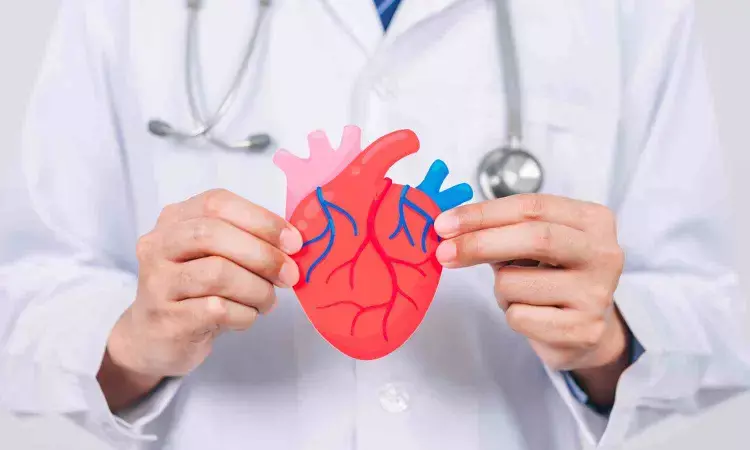- Home
- Medical news & Guidelines
- Anesthesiology
- Cardiology and CTVS
- Critical Care
- Dentistry
- Dermatology
- Diabetes and Endocrinology
- ENT
- Gastroenterology
- Medicine
- Nephrology
- Neurology
- Obstretics-Gynaecology
- Oncology
- Ophthalmology
- Orthopaedics
- Pediatrics-Neonatology
- Psychiatry
- Pulmonology
- Radiology
- Surgery
- Urology
- Laboratory Medicine
- Diet
- Nursing
- Paramedical
- Physiotherapy
- Health news
- Fact Check
- Bone Health Fact Check
- Brain Health Fact Check
- Cancer Related Fact Check
- Child Care Fact Check
- Dental and oral health fact check
- Diabetes and metabolic health fact check
- Diet and Nutrition Fact Check
- Eye and ENT Care Fact Check
- Fitness fact check
- Gut health fact check
- Heart health fact check
- Kidney health fact check
- Medical education fact check
- Men's health fact check
- Respiratory fact check
- Skin and hair care fact check
- Vaccine and Immunization fact check
- Women's health fact check
- AYUSH
- State News
- Andaman and Nicobar Islands
- Andhra Pradesh
- Arunachal Pradesh
- Assam
- Bihar
- Chandigarh
- Chattisgarh
- Dadra and Nagar Haveli
- Daman and Diu
- Delhi
- Goa
- Gujarat
- Haryana
- Himachal Pradesh
- Jammu & Kashmir
- Jharkhand
- Karnataka
- Kerala
- Ladakh
- Lakshadweep
- Madhya Pradesh
- Maharashtra
- Manipur
- Meghalaya
- Mizoram
- Nagaland
- Odisha
- Puducherry
- Punjab
- Rajasthan
- Sikkim
- Tamil Nadu
- Telangana
- Tripura
- Uttar Pradesh
- Uttrakhand
- West Bengal
- Medical Education
- Industry
Ventricular tachyarrhythmias might be most common cardiac arrhythmia after Acute MI: Study

A recent comprehensive analysis found the coexistence of cardiac arrhythmias in patients with acute myocardial infarction (AMI), the findings from the China Acute Myocardial Infarction (CAMI) registry unveiled significant implications for patient outcomes. The study published in the recent issue of BMC Cardiovascular Disorders included data from a total of 23,825 consecutive AMI patients across 108 hospitals and offered crucial insights into the prevalence and impact of arrhythmias in this population.
According to the findings, cardiac arrhythmias were detected in 8.35% of AMI patients where ventricular tachyarrhythmias emerged as the most common type, followed by bradyarrhythmias, atrial tachyarrhythmias and combinations of multiple arrhythmias. The patients with arrhythmias were more frequently associated with ST-segment elevation myocardial infarction, fibrinolysis and a history of heart failure which underlines the complex interplay between these conditions.
The study highlights the substantial burden of arrhythmias on in-hospital outcomes, with patients experiencing arrhythmias expressing significantly higher rates of adverse events such as all-cause mortality, cardiogenic shock, re-infarction, stroke or heart failure. The incidence of in-hospital outcomes was markedly higher in patients with any form of arrhythmia when compared to the individuals without. This emphasizes the detrimental impact of arrhythmias on the prognosis of these patients.
The independent association between arrhythmias and high risks of hospitalization outcomes and in-hospital mortality further illuminates the urgent need for targeted interventions and management strategies in AMI patients with concurrent arrhythmias. With odds ratios indicating substantially increased risks across all types of arrhythmias, from ventricular tachyarrhythmias to atrial tachyarrhythmias, the study underscores the imperative for heightened vigilance and tailored therapeutic approaches in this vulnerable patient population.
The comprehensive analysis highlighted the significant prevalence of cardiac arrhythmias in AMI patients and their strong impact on clinical outcomes. These findings underline the importance of early detection and management of arrhythmias in AMI and also emphasize the imperative for further research to unveil the optimal therapeutic strategies and improve patient outcomes in this high-risk population. Overall, the implications of this research prompts intensified efforts towards multidisciplinary approaches in reducing the adverse effects of arrhythmias in AMI patients and ultimately enhancing the quality of care and patient outcomes in this critical setting.
Reference:
Xu, X., Wang, Z., Yang, J., Fan, X., & Yang, Y. (2024). Burden of cardiac arrhythmias in patients with acute myocardial infarction and their impact on hospitalization outcomes: insights from China acute myocardial infarction (CAMI) registry. In BMC Cardiovascular Disorders (Vol. 24, Issue 1). Springer Science and Business Media LLC. https://doi.org/10.1186/s12872-024-03889-w
Neuroscience Masters graduate
Jacinthlyn Sylvia, a Neuroscience Master's graduate from Chennai has worked extensively in deciphering the neurobiology of cognition and motor control in aging. She also has spread-out exposure to Neurosurgery from her Bachelor’s. She is currently involved in active Neuro-Oncology research. She is an upcoming neuroscientist with a fiery passion for writing. Her news cover at Medical Dialogues feature recent discoveries and updates from the healthcare and biomedical research fields. She can be reached at editorial@medicaldialogues.in
Dr Kamal Kant Kohli-MBBS, DTCD- a chest specialist with more than 30 years of practice and a flair for writing clinical articles, Dr Kamal Kant Kohli joined Medical Dialogues as a Chief Editor of Medical News. Besides writing articles, as an editor, he proofreads and verifies all the medical content published on Medical Dialogues including those coming from journals, studies,medical conferences,guidelines etc. Email: drkohli@medicaldialogues.in. Contact no. 011-43720751


